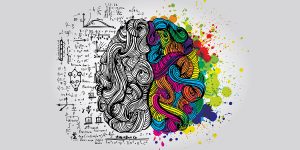
User Experience (UX) design is a delicate interplay between aesthetics and functionality. A visually appealing design can capture users’ attention and create a positive first impression, but it’s the functional aspects that keep users engaged and satisfied. Striking the right balance between aesthetics and functionality is a fundamental challenge in UX design, and it requires a deep understanding of user needs, business goals, and design principles.
The Aesthetics Factor
Aesthetic design involves the visual elements that make an interface visually pleasing. Colors, typography, imagery, and layout contribute to the overall look and feel of a product. Aesthetics play a significant role in forming users’ initial perceptions of a website or application. A well-designed interface can establish brand identity, evoke emotions, and create a memorable user experience.
The Functionality Factor
Functionality is about how well a design meets users’ needs and enables them to achieve their goals efficiently. A functional design is intuitive, easy to navigate, and provides a seamless user journey. Features should be logically organized, and interactions should align with user expectations. Prioritizing functionality ensures that users can complete tasks without frustration, leading to a positive experience and repeat usage.
The Balancing Act
1. User-Centered Design: Start with a deep understanding of your target audience. Consider their preferences, behaviors, and pain points. A design that aligns with users’ needs ensures that aesthetics and functionality work together harmoniously.
2. Clear Visual Hierarchy: Aesthetics and functionality can coexist through a clear visual hierarchy. Important elements should stand out while maintaining a cohesive design. Visual cues guide users’ attention, aiding in seamless navigation and task completion.
3. Consistency: Consistency is key to achieving the right balance. Maintain a consistent design language across the interface, from buttons to icons to colors. Consistency enhances user comprehension and reduces cognitive load.
4. Usability Testing: Test the design with real users to identify pain points and usability issues. Feedback from usability testing helps refine both aesthetics and functionality, ensuring a user-centered approach.
5. Prioritize Content: Content is central to both aesthetics and functionality. Ensure that the content is easily accessible, well-organized, and presented in a visually appealing manner. Balancing content presentation enhances both usability and visual appeal.
6. Progressive Enhancement: Consider implementing progressive enhancement, where the core functionality is available to all users, and additional aesthetic enhancements are layered on for those with compatible devices or browsers.
Successful Examples
Several brands have excelled in balancing aesthetics and functionality in their UX design:
- Apple: Known for its sleek and minimalist design, Apple products prioritize aesthetics without compromising functionality. The intuitive user interfaces make their devices easy to use, enhancing user satisfaction.
- Airbnb: Airbnb’s platform is visually captivating, but its success lies in its functionality. The search and booking process is seamless, aligning with users’ goals while providing an aesthetically pleasing experience.
- Google: Google’s minimalist search interface focuses on functionality, allowing users to access information quickly. Its simple design ensures that the emphasis remains on usability.
Conclusion
Balancing aesthetics and functionality is a continuous process that requires collaboration among designers, developers, and stakeholders. Prioritizing both aspects is essential for delivering a holistic user experience. A design that successfully marries aesthetics and functionality results in a product that not only looks appealing but also fulfills users’ needs efficiently. By striving for this equilibrium, UX designers can create experiences that are both visually impressive and highly functional, contributing to user satisfaction and engagement.
If you’re a start-up or small business looking to develop high-quality software products quickly and efficiently, Striano is here to help.
Our passionate team of experts specializes in software development and can design sophisticated IT solutions that meet your unique requirements. Don’t let the pressure of competition and time-to-market hinder your success.
Contact us today to see how we can help take your business to the next level!
I wanted to take a moment to express how much I enjoyed reading your insightful blog post about balancing aesthetics and functionality in UX design. Your article truly hit the mark in highlighting the intricate dance between these two essential elements.
Your explanation of how a visually appealing design can immediately captivate users’ attention while functional aspects maintain engagement resonated deeply with me. It’s fascinating how aesthetics serve as the initial gateway, leaving a lasting impression that can define a user’s perception of a website or application.
Thank you so much for taking the time to share your thoughts! I’m genuinely pleased to hear that the article resonated with you. It’s a continual challenge and joy to delve into the nuances of UX design, especially when considering the harmony between aesthetics and functionality. Your observation about aesthetics being the ‘initial gateway’ is spot on and further underscores the importance of a well-balanced design. I appreciate your engagement and hope to continue offering valuable insights in the future. Cheers!